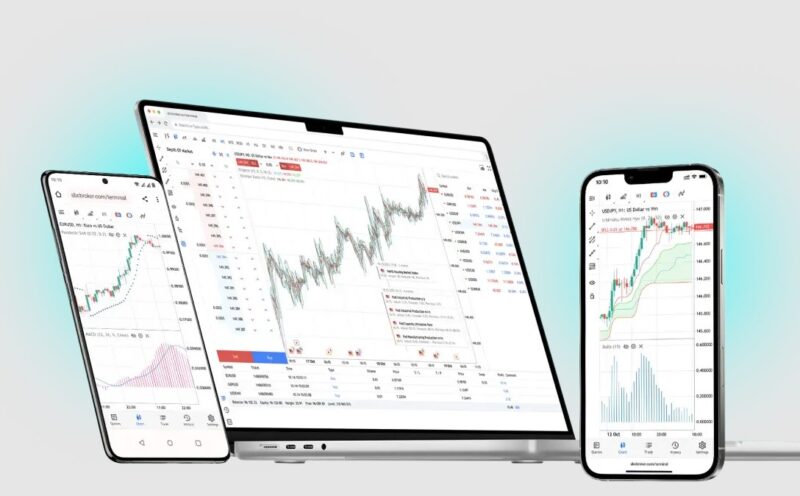Navigating the trading world can feel like tiptoeing through a field scattered with traps. Finding a genuine platform that lets you trade safely is a must. Here, I’ll share essential ways to spot a trading scam and protect your investment.
I know you might feel like everything out there looks the same, but trust me, a few details will make all the difference. Let’s start with key pointers you need to remember every time you consider signing up on any trading website.
Key Points
- Always check for regulation and licensing with a credible financial authority.
- Pay attention to user reviews and testimonials on trusted sites.
- Examine how transparent the company is with its fees and conditions.
- Observe the platform’s customer support and their willingness to provide help.
- Evaluate deposit and withdrawal policies carefully for hidden obstacles.
1. Verify Regulation and Licensing
Before considering any trading platform, confirm that it’s properly regulated. Most reliable ones openly display their license information from reputable financial authorities. If you’re scrolling and can’t see any mention of regulation or licensing, consider it a red flag. Reliable platforms like Binomo ensure compliance with trading standards and are fully transparent about their policies. They present licensing details upfront, making it easy for you to verify their legitimacy.
A legitimate license means the platform adheres to strict rules, protecting you against sudden surprises. Also, double-check the regulatory body itself to make sure it’s recognized. Fraudulent platforms often claim fake licenses from “overseas” regulators or use fictional regulatory names to appear legitimate.

2. Scrutinize User Reviews
Nothing gives away a scam faster than a pattern of consistent complaints. Head to independent review sites and forums where real users talk about their experiences. Keep an eye out for mentions of blocked withdrawals, excessive fees, or customer service that’s impossible to reach.
A platform with trustworthy service will typically show a mix of feedback, mostly positive, with a few complaints (no company is perfect). On the other hand, if you see repeated warnings about the same issues, it’s best to steer clear.
3. Watch Out for Too-Good-to-Be-True Promises
Promises of “guaranteed profit” and “instant wealth” are traps many fall for, only to regret later. No legitimate platform can assure you a profit on trades—markets fluctuate, and even the best strategies sometimes fall short.
A reliable platform will focus on the tools and resources it offers, like access to charts and analysis, not promises of “quick wealth.” Keep your expectations real and steer clear of any company promising effortless success.
4. Transparency in Fees and Conditions
Scam platforms often attract customers with the allure of “no fees” only to hide them in other ways. Before committing, make sure you understand every fee the company charges. Reliable companies make their fee structure visible without burying it in fine print.
Look closely at deposit and withdrawal policies as well. Often, shady platforms will make it easy to deposit but challenging to withdraw, especially when it’s time to cash out your profits. Transparency here is a strong indicator of legitimacy.
| Fee Type | What to Check |
| Deposit Fees | Are deposits free, or do they charge hidden fees? |
| Withdrawal Fees | Transparent and reasonable or only small amounts? |
| Trading Fees | Per trade or hidden costs? |
| Inactivity Fees | Check for these if you plan occasional trades only |
5. Test Customer Support Responsiveness
Customer support can reveal the intentions behind any platform. Try reaching out before you even join to see how quickly and effectively they respond. A legitimate company invests in helpful customer service for its users, offering multiple ways to reach them, such as email, phone, or live chat.
Many scam platforms, however, dodge user questions or provide vague responses that fail to address concerns directly. Don’t overlook this aspect; a lack of support can become a major issue later on if you need help.

6. Check Deposit and Withdrawal Policies
Scammers make money by trapping yours. If a platform requires huge minimum deposits or makes excuses to delay withdrawals, that’s a red flag. Always review the minimum deposit requirements and withdrawal procedures thoroughly. Reliable platforms often require minimal deposits for beginners and offer straightforward, transparent withdrawal options. Be wary of any company that forces high deposits before you’ve even had a chance to try their service.
7. Look Out for High-Pressure Sales Tactics
High-pressure sales tactics can be an immediate red flag. If a platform pressures you with calls, emails, or chat messages encouraging you to deposit or upgrade your account, it’s likely they’re more focused on your money than your trading success. Remember, a real company will never pressure you into making hasty financial decisions.
Conclusion
Finding a safe place to trade means checking for transparent practices, accessible customer support, and regulatory oversight. If a platform fails to offer clear answers on fees, withdrawals, or other policies, it’s best to walk away. Your time, money, and peace of mind deserve protection. Don’t let anyone convince you otherwise.


